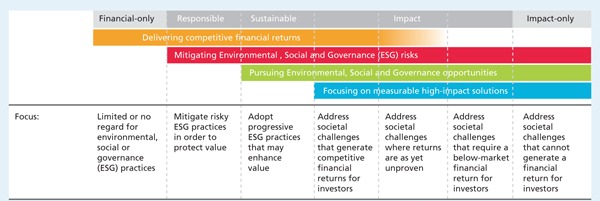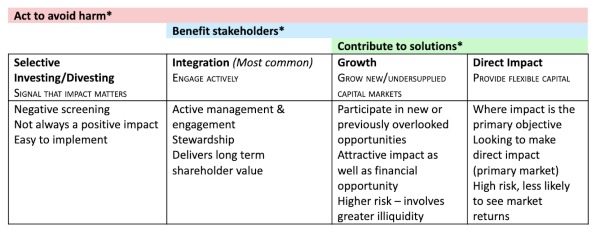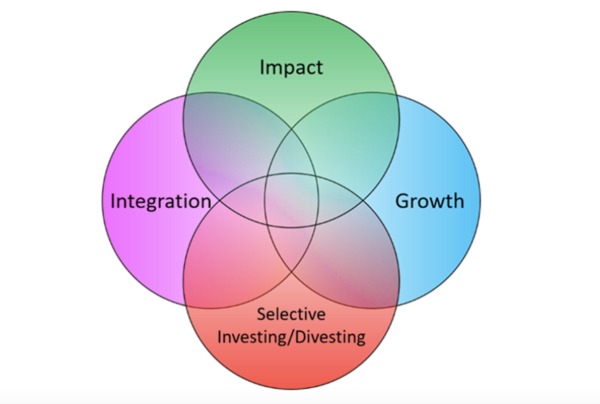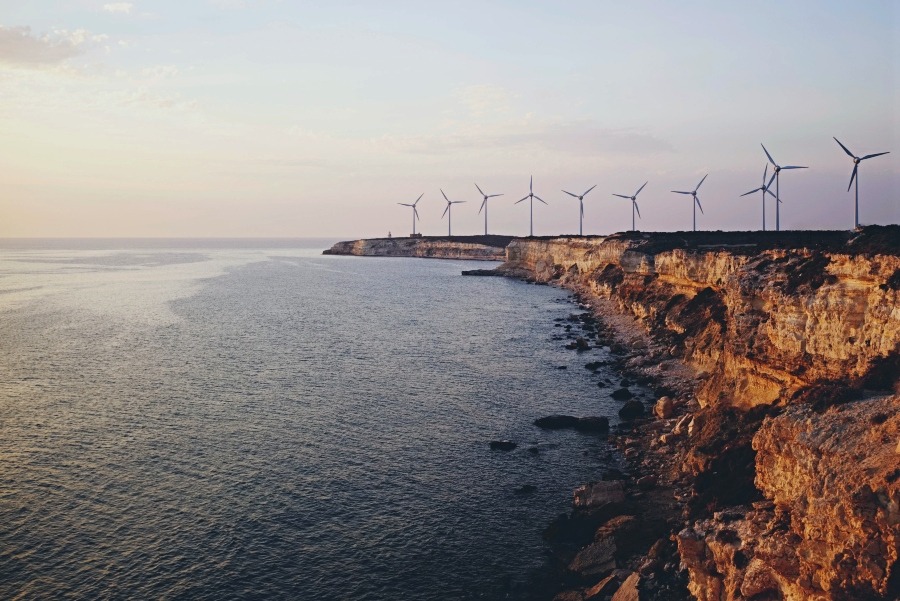The growing trend and availability of sustainable and impact investment options is allowing families to engage with their wealth like never before. We believe that engagement at all stages of the wealth management process is the key to success – families who wish to reflect their values and principles in their approach to investment will remain engaged and feel in control of their wealth; advisers who engage with their managers will ensure that financial results and societal and environmental impact are in line with the objectives for the wealth; managers who engage with the companies they invest in will help deliver better outcomes for shareholders, society and the environment.
Sustainable Investing Is A $30 Trillion Market
Sustainable investing, ESG investing and impact investing are all ways in which investors can take advantage of the power of their capital to effect positive social or environmental change. The vast availability of investment solutions has grown to such a level that this can now be implemented across most asset classes of a client’s portfolio.
Demand for sustainable investing is growing. Investment assets across sustainable and impact reached nearly $10 trillion in 2016, a 41% increase from 2014, and McKinsey say it is now a $30 trillion market (Source: McKinsey & Co – From ‘Why’ to ‘Why not’: Sustainable investing as the new normal). The United Nations-supported Principles for Responsible Investment (PRI) founded a way for firms to publicly demonstrate their commitment to sustainable investing. Founded in 2006, the number of signatories in the last 10 years has increased by almost five-fold.
It’s Not Just About Doing Good & Being Green
The argument in favour of sustainable investing is not simply one of ‘doing good’ or ‘being green’, there is also a growing necessity to adapt in order to meet the demand of future generations. A 2016 report by Accenture estimates that $30tn of assets could pass from Baby Boomers to Millennials over the next 30 years (Source: Accenture – The ‘Greater’ Wealth Transfer.).
It has been found that Millennial investors are nearly two times more likely to invest in companies/funds that target specific social or environmental outcomes. Changes to the way in which capital is currently allocated and managed is inevitable. This demand has already been demonstrated in powerful movements in the consumer market with unethical brands being boycotted, and once the Millennial generation comes to make decisions about their own wealth, they will treat investors in the same manner.
Different Approaches To Sustainable & Impact Investing
Investors adopt different approaches when it comes to sustainable and impact investing. Below is an example of the spectrum of capital from the G8 Social Impact Investment Taskforce.

Source: G8 Social Impact Investment Taskforce, Asset Allocation Working Group (2014)
This illustrates how the spectrum of invested capital ranges from a financial-only focus to an impact-only focus and shows the progression from responsible (mitigating risky ESG practices), sustainable (progressive ESG practices) to true impact investing.
Another way to view it is the investor matrix developed by the Impact Measurement Project (IMP) (shown below with Wren additions).

Table 1: Approaches to Sustainable Investing in the scope of the ‘Investor’s Contribution’ from IMP Investor’s Matrix.
The first approach is Selective Investing where investors choose not to invest, or divest, in certain investments using negative screening. The purpose of this is to signal to companies that bad practices will not attract capital or investment. The second is Integration or active engagement, where investors use their expertise and networks as well as the power of invested capital to improve the environmental or societal performance of a business. While the motivation behind this might still be financial, it may encourage positive change towards sustainable practices.
Further along this spectrum is Growth, where an investor may participate in new or previously overlooked opportunities that offer both an attractive impact and financial opportunity. At the far end of the spectrum is Direct Impact which is where impact is the primary objective. A lower financial return is accepted in order to generate impact and often these investments are made in the primary market, providing direct and new capital. A client’s portfolio could hold a combination of these approaches to reflect values and risk preference as well as to maintain portfolio diversity.

Exclusion And Negative Screening Investing
We think of exclusion as a client choice, rather than a sustainable investment approach. Exclusion and negative screening investing, such as investing only in companies with a certain ESG score, does not reward a company’s endeavours to evolve to a more sustainable business model.
An oil and gas company investing heavily and transitioning into renewable energies may be screened out in an exclusion portfolio whereas proper engagement could lead to meaningful change and could make a good choice for a sustainable investment.
We also challenge whether investing in stocks and bonds is genuine impact investing. It is difficult to argue that buying shares in the secondary market provides positive societal or environmental outcomes as a result of that investment (other than marginally reducing the cost of capital for those companies); no new capital has been provided, it is simply being bought from someone else.
For those that really want to make impactful investments they should ask themselves “What will change from us investing?”.
We believe that sustainable investing is not a new way to invest – it is simply good investment practice. We consider the fundamental principles of ESG to be an enrichment of the investment process. We think that building long term relationships with companies and fund managers, and engaging with them on important ESG issues, is an essential framework for thorough research.
Sustainable and Impact investing at Wren Investment Office
Wren Investment Office benefits from substantial resources and an international perspective as a result of its formal alliance with WE Family Offices in the US and MdF Family Partners in Europe. This alliance advises on over £12bn of client assets and those clients have chosen to work with us because we have been able to demonstrate breadth and depth of investment resource, experience and knowledge.
We advise across all asset classes for clients based in the UK, US, Europe, Latin America and Africa and oversee over 150 investment managers. At the core of our alliance is a jointly agreed set of investment principles which form the foundation of our combined investment process.
We have reviewed over 150 ESG and impact managers across all asset classes – cash, social impact bonds, green bonds, credit and high yield, equities, ETFs, real assets, private equity and direct opportunities over the past few years and our clients currently have investments with 25-30 of them.
We are seeing growing interest for sustainable and impact, or values-aligned, investing across our client base, especially from younger generations. This is a growing part of our business and we expect it will become increasingly relevant for all our clients. As a result, we have immersed ourselves in this discovery process and are very well positioned to understand the needs of our clients looking to align their values with their portfolio, but also to share this knowledge with others to promote the essence of sustainable investing.
Wren Investment Office
January 2020
Read part 2 of our Introduction to Sustainable & Impact investing



